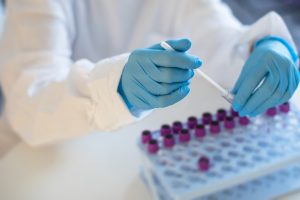South African scientists are at the forefront of fighting one of the world's most dangerous viruses, which kills up to 89% of its victims.
Doctors at the National Institute for Communicable Diseases have imported 44 bats from a remote area in the Democratic Republic of Congo after spending six years upgrading their research facility to isolate the Ebola virus.
Professor Janusz Paweska, head of the special pathogens department at the institute, travelled to the central African country's Luebo district last month to trap the bats, kill them and bring them home to study.
The virus, which causes death from internal bleeding, was discovered in 1976, but doctors still know little about how victims are infected.
They suspect bats, eaten in the area in which there were three outbreaks of the disease from 2007 to 2009, carry the virus and transmit it to people eating them.Doctors have yet to find the virus in the bats.
Researchers at the facility in Sandringham, Johannesburg, start dissecting the bats' livers, spleen and lungs next week. "There are many groups who are trying [to find the virus]. This is one of the most hunted treasures in modern virology but no one has succeeded yet to isolate the virus from wildlife," said Paweska.
One of the bats he brought to South Africa is the Hypsignathus monstrosus bat. "It could be [eaten] because it is a very big species. It's like a small chicken. The male bats weigh about 400g so it's a major source of protein," he said.
Because Ebola is such a deadly virus, Paweska and his 11 post-doctoral and MSc students from Zambia, Tanzania, Mozambique and Congo must wear fully enclosed plastic suits with their own oxygen supplies before entering the new bio-safety level four laboratory completed in May.
Ebola is so dangerous that only two researchers can enter the laboratory at the same time.
The laboratory is one of the world's largest containment facilities for dangerous biological specimens. It is recognised by the World Health Organisation as the leading research centre for viral haemorrhagic fevers.
The "animal room", containing the bats and other deadly specimens, is in the centre of the laboratory, which is accessible only via a series of tightly sealed doors that stop the virus being transferred outside.
Before entering the room, researchers in their suits must take five-minute chemical showers to ensure they do not take any foreign particles inside.
The laboratory is monitored by closed-circuit TV. All doors have red biohazard warning labels.
Paweska hopes to capture thousands more bats to study next year. If he can find the virus, he can then figureout how it is transferred to people. "We don't know if it is excreted through urine or saliva and how is it transmitted between the bats," he said. He also wants to learn how long the virus survives in meat.




